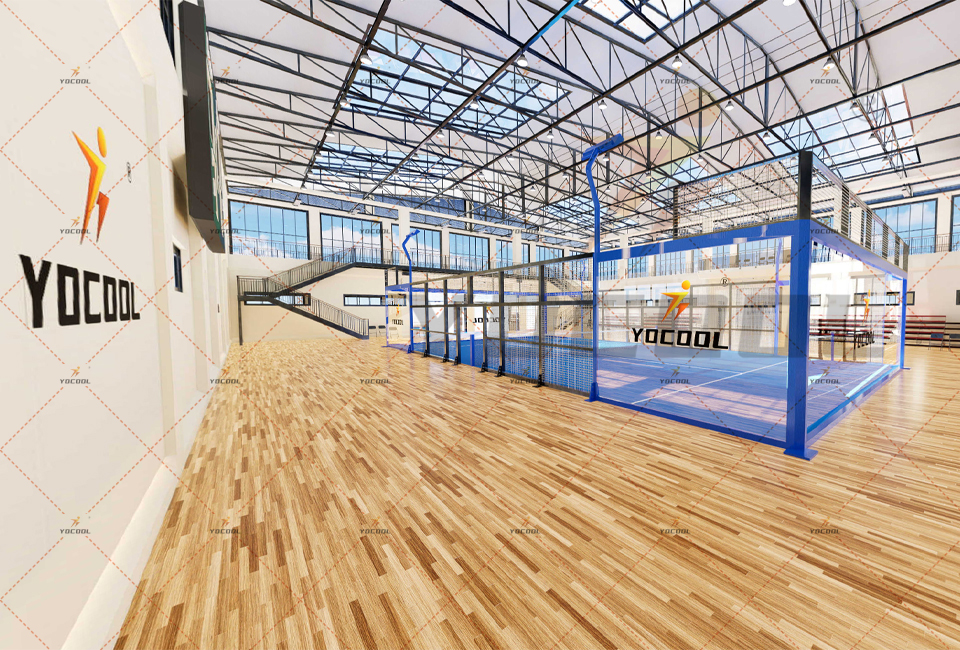

The Cost to Build a Padel Court A Comprehensive Overview
Padel tennis, a sport that combines elements from tennis and squash, has been rapidly gaining popularity across the globe. As a result, many entrepreneurs and sports enthusiasts are considering the establishment of their own padel courts to cater to this growing interest. However, before diving into this venture, it’s crucial to understand the various costs associated with building a padel court. This article aims to break down the expenses involved and provide insights for potential manufacturers and investors looking to capitalize on this trend.
1. Land Acquisition Costs
The first major expense in building a padel court is acquiring suitable land. The required area for a standard padel court is approximately 20 meters long and 10 meters wide, which translates to around 200 square meters. Depending on the location, land prices can vary significantly. In urban areas or regions with high demand for sports facilities, prices can soar, making land acquisition one of the most substantial investments in the project.
Once land has been secured, the next step is constructing the actual padel court. The cost of building a padel court is dependent on various factors, including the type of materials used, the design of the court, and any additional features desired (like lighting and seating). On average, the construction cost of a single padel court can range from $25,000 to $50,000. Factors affecting these costs include
- Material Quality Opting for high-quality glass walls and weather-resistant floors may increase initial expenditure but can lead to reduced maintenance costs over time. - Court Type Outdoor courts might require different surfacing and construction techniques than indoor courts, influencing overall costs. - Design Complexity A simple court will generally be less expensive than a more elaborate setup featuring unique design elements or added functionality.
3. Equipment and Accessories
Every padel court requires a set of essential equipment, including nets, pads, and boundary lines. Additionally, if the intention is to host tournaments, having quality lighting systems installed is crucial as it allows for play during the evening. The overall cost for this equipment can range between $5,000 and $15,000, depending on the quality and brands chosen.

4. Permitting and Legal Costs
To build a padel court, one must also consider the costs related to permits and legal considerations. Local regulations concerning sports facilities can vary greatly, so it’s vital to conduct thorough research in your area. This could involve obtaining plans from engineers or architects, ensuring compliance with zoning laws, and securing liability insurance. Depending on the locality, these costs can add up to several thousand dollars.
5. Maintenance Costs
After the construction of a padel court, ongoing maintenance is a necessary expense that should not be overlooked. Regular maintenance is crucial to keep the court in good shape, which includes cleaning, repair works, and resurfacing the playing area. Generally, annual maintenance costs can range from $1,000 to $3,000, depending on usage frequency and the quality of materials initially chosen.
6. Marketing and Operational Costs
Once the court is built, it is essential to attract players and maintain a steady influx of visitors. This will involve creating a marketing strategy, which may encompass social media campaigns, community engagement events, and partnerships with local sports clubs or schools. Allocating a budget for marketing—usually around 5-10% of projected first-year revenues—will help ensure the court becomes a vibrant hub for the padel community.
Conclusion
Building a padel court is an exciting but complex venture that requires careful financial planning and consideration of various factors. From land procurement and construction to equipment acquisition and ongoing maintenance, costs can accumulate quickly. However, with the right strategy, successful marketing, and adherence to quality standards, a padel court can become a profitable investment in a thriving sport. As padel continues to grow in popularity, those who establish well-constructed courts in strategic locations stand to benefit greatly in both community engagement and financial returns.
High-Performance Industrial Flooring Solutions China Paddle Tennis Court for Sale
High-Performance Industrial Flooring Solutions Durable & Cost-Effective
Homogeneous Transparent Floor – Durable & Stylish Rubber Floor Solutions
Premium Homogeneous Transparent Floor for Durable & Stylish Spaces Rubber Floor Solutions
Premium Sports Floor Solutions Durable PVC Sports Floor & Rubber Floor for Gyms
Durable Rubber Composite Floor Premium Rubber Floor & Mats Solutions